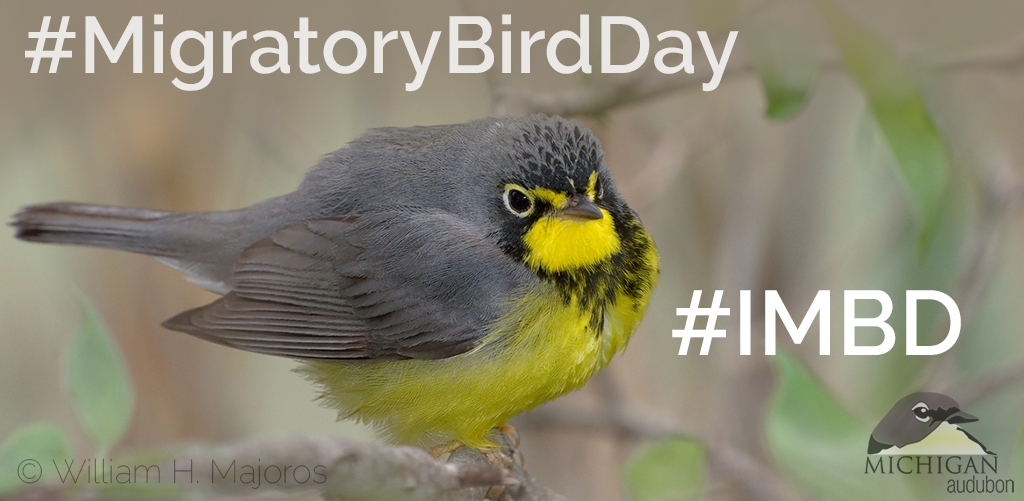Migratory Bird Day, May 14, 2016
by Conservation Science Coordinator Rachelle Roake
Tanagers, orioles, thrushes, flycatchers, warblers—the air is full of migrants and birdsong. To celebrate the return of these and other transcontinental migrants, this Saturday, May 14, 2016 is International Migratory Bird Day. This year’s celebration is particularly special as we are honoring the Migratory Bird Treaty centennial: one hundred years of protecting migratory birds. The Migratory Bird Treaty provides essential legal protections against the disturbance, take, or collection of migratory birds. A hundred years ago, bird populations were threatened by the fashion industry and unregulated hunting. Today, hats are no longer adorned with delicate egret feathers; however, our birds face a daunting list of threats. Habitat loss and fragmentation, climate change, invasive species, poorly-sited wind farms, deforestation, oil and gas extraction—the list seems never-ending.

Canada Warblers breed in Canada’s boreal forest, a habitat that is rapidly disappearing due to logging, mining, and oil and gas extraction.
Every spring I hold my breath until the migrants return. I ask myself: “Is this the year they won’t make it back? Is this the year we’ve gone too far? Have we finally taken too much?” Thankfully, I can hear a spirited “witchity-witchity-witchity” and a raspy “bee-bzzzzz” from where I sit. I can finally exhale. This is not the year of no return.
But it is not time to breathe easy. I know that if we as bird-lovers and conservationists do not take action, we will continue to see steep population declines in some of our most-treasured species. On this International Migratory Bird Day, please get out and marvel at the wonder of migration. The birds you see are fighting against all odds, yet they persevere. They have returned north for another summer to breed. These birds need our help to ensure they return, with their young, next spring. Below is a list of actions you can take right now to support birds and the habitat they depend on for survival. International Migratory Bird Day is a time for celebration, a time for change, and a time for action.
Make lifestyle changes to reduce your carbon footprint:
- Ride your bike or carpool to work
- Join a local CSA (Community Supported Agriculture)
- Bring reusable bags, coffee cups, and water bottles wherever you go
- Conserve water and energy
- Make well-informed decisions as a consumer (ex: buy bird-friendly coffee, buy used instead of new)
Create a bird-friendly yard (Visit our new Bird-Friendly Native Plants page!):
- Remove invasive plants
- Plant Michigan native flowers that are “bird-friendly” (coneflowers, sunflowers, asters, etc.)
- Plant shrubs that bloom early for spring migration (willow, elm, serviceberry)
- Plant shrubs that provide berries for fall migration (elderberry, dogwood)
- Plant an oak tree that supports over 500 species of insects (aka bird food)
- Avoid use of pesticides
- Leave a corner of your yard unmowed and “wild” with native plants
- Plant a low-grow native grass that doesn’t need mowing
- Provide different layers of vegetation (trees, shrubs, flowers, vines, grasses)
Volunteer for conservation:
- Participate in invasive plant workdays at your local natural area.
- Become a Michigan Audubon volunteer.
- Become a long-term bird monitor at your local park or natural area.
- Participate in regional counts (Christmas Bird Count, Breeding Bird Survey, NA Migration Count – May 14th, 2016)
- Offer your skills to local conservation groups; there are more ways to get involved than only working outdoors!
- Encourage your workplace, school, or place of worship to make bird-friendly changes (native landscaping, Safe Passage, bird tape on windows, nest boxes)
Resources to learn more:

